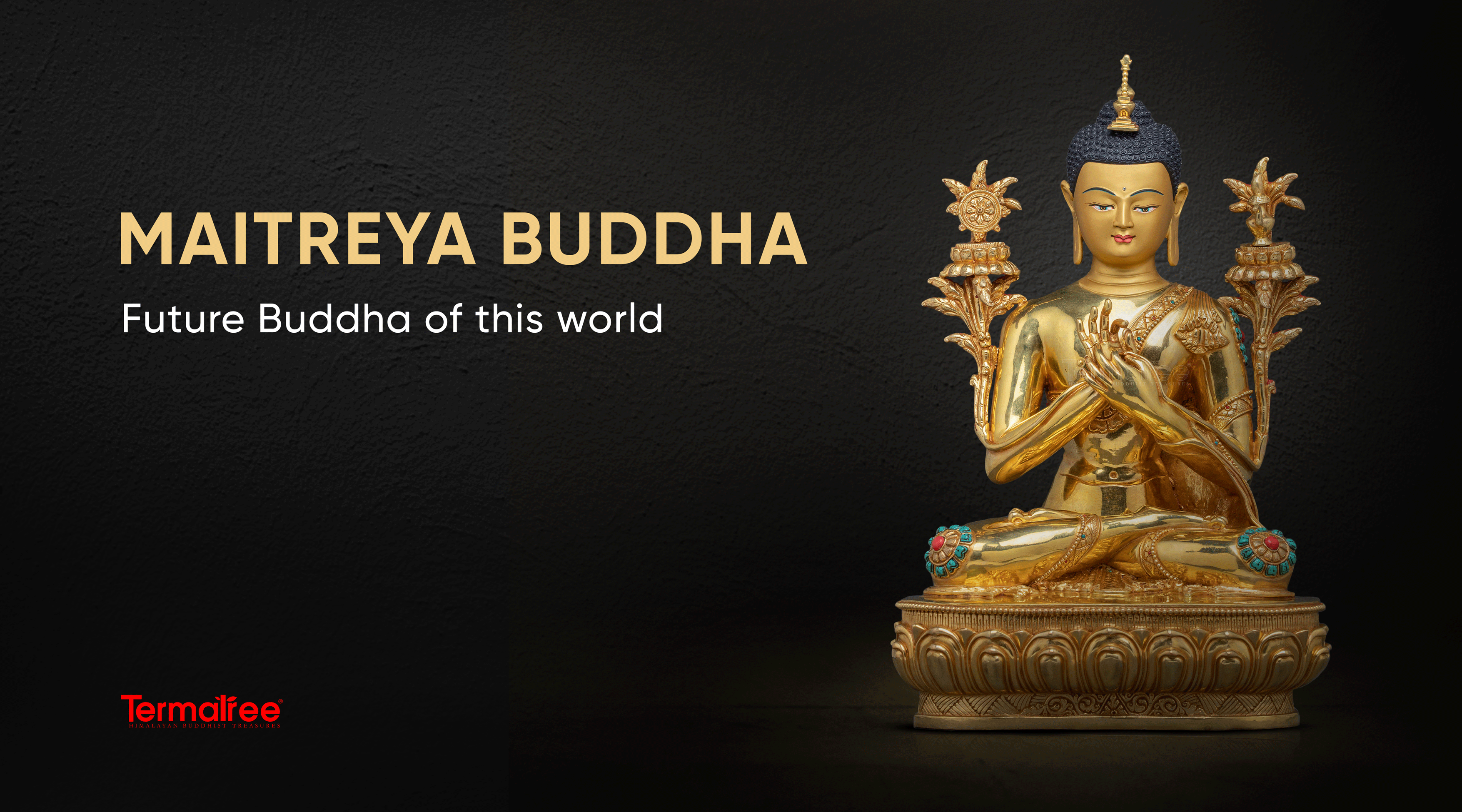To fully appreciate Black Dzambala, it is necessary to understand the broader Dzambala tradition. The word “Dzambala” comes from Sanskrit roots: Dzam (deity /gathering), bhah (gold or wealth), la (honor). It can be understood as the “precious golden deity who gathers or distributes wealth (material and spiritual)".  Click here to View our Collection of Jambala Statue
Click here to View our Collection of Jambala Statue
-
Emanation & lineage:
Dzambala is often seen as an emanation of Avalokiteshvara / Chenrezig (the Bodhisattva of Compassion) or connected with the Buddha Ratnasambhava, reflecting that true wealth arises from compassion. -
Five forms of Dzambala:
This tradition recognizes five main manifestations — Yellow Dzambala, White Dzambala, Green Dzambala, Red Dzambala, and Black Dzambala. Each embodies a different aspect of wealth, protection, abundance, or spiritual purification.
Click here to Read more about the FIVE JAMBALA -
His practice is not a mere accumulation of material wealth, but to remove poverty, diminish obstacles, cultivate generosity, and support one’s spiritual path.
Black Dzambala: Identity, Symbolism, and Iconography
Identity & Attributes
-
Wrathful/fierce form: Black Dzambala is classed among the wrathful (or semi-wrathful) deities. His fierce appearance is meant to subdue negative forces, obstacles, greed, ego, and poverty.

-
Affiliation with a Buddha: He is often considered a manifestation of Amoghasiddhi Buddha in Vajrayana Buddhist cosmology. Through this association, he embodies the capacity to act and overcome obstacles.
-
Relation to Kubera / Vaisravana: In many sources, Dzambala is syncretized or compared to the Hindu god of wealth, Kubera (or Vaisravana). In some iconographic traditions, Black Dzambala is identified with or inherits attributes from Kubera.
 Click here to View our Collection of Black Jambala Statue
Click here to View our Collection of Black Jambala Statue
Iconography & Symbolic Elements
In thangka paintings, statues, and ritual imagery, Black Dzambala is depicted with distinct attributes. Understanding these helps one spiritually “read” the image.
| Element | Description | Symbolic Meaning |
|---|---|---|
| Color: Black /dark hue | His body is painted black or very dark | Represents his power to absorb negativity, darkness, defilements, and obstacles. It signals that he acts forcefully to cleanse and protect. |
| Posture: standing | He stands (rather than sits) | A dynamic posture of action; readiness to intervene. It also emphasizes his forceful role in removing obstacles. |
| Stepping on a human | He steps on a naked human form | Symbolizes subjugation of ego, ignorance, greed, and inner adversaries. |
| Skullcup / Kapala | In his right hand:a skullcup |
Indicates the transformation of poisonous or negative energies into wisdom or wealth. |
| Mongoose (Nehulay) | In his left hand, a mongoose spitting jewels | Symbolizes the subduing of the nagas (serpent spirits) guarding treasures, and the spontaneous, generous giving of wealth. |
| Snake necklace | He wears a snake as ornament | Reflects mastery over serpentine energies or obstacles, and the transformation of harmful forces. |

Black Jambala in Thangka: Source: Enlightenment Thangka
Spiritual Significance & Benefits of Black Dzambala
Removal of Obstacles & Negativity
One of his primary roles is subjugating obstacles, negative karmas, debts, misfortune, and internal hindrances (ignorance, ego, greed). Because of his fierce nature, Black Dzambala is invoked when such obstacles feel persistent or overwhelming.
Black Dzambala acts as a guardian deity, protecting wealth and spiritual practice from external theft, loss, misfortune, or spiritual derailment.
Stabilizing Prosperity
Beyond protection, he can stabilize or secure wealth already attained — so that material gains are sustained rather than fleeting. Thus, practitioners offer gratitude and maintain ethical conduct toward wealth.
Supporting Generosity & Bodhisattva Ideal
In Vajrayana Tradition, wealth is not an end in itself, but a resource to serve others. Invocation of Dzambala (including Black Dzambala) is linked with the ideal of generosity: to cultivate a mind free from clinging and to give.
Inner Transformation
Because he is fiercer, Black Dzambala can be a powerful ally in inner spiritual work: transforming fears, inertia, spiritual stagnation, or self-limiting beliefs. When obstacles arise in meditation or path, one may turn to him. This makes him both a wealth and a protector deity in one.
Hence, Black Dzambala is a profound, powerful form of the wealth deity tradition — fierce yet compassionate, protective yet generous. He is especially suitable for those seeking help in overcoming deep obstacles, stabilizing resources, or transforming inner blockages.
If you approach his practice with sincerity, devotion, proper guidance, and ethical motive, he can become a potent ally not just for material stability but for inner growth and generosity.






1 comment
☎ 💹 Account Notification: +2.5 BTC processed. Access here >> https://graph.org/Get-your-BTC-09-04?hs=4d111586d7fd50e2ef7bc72af550bcaf& ☎
x9bksq